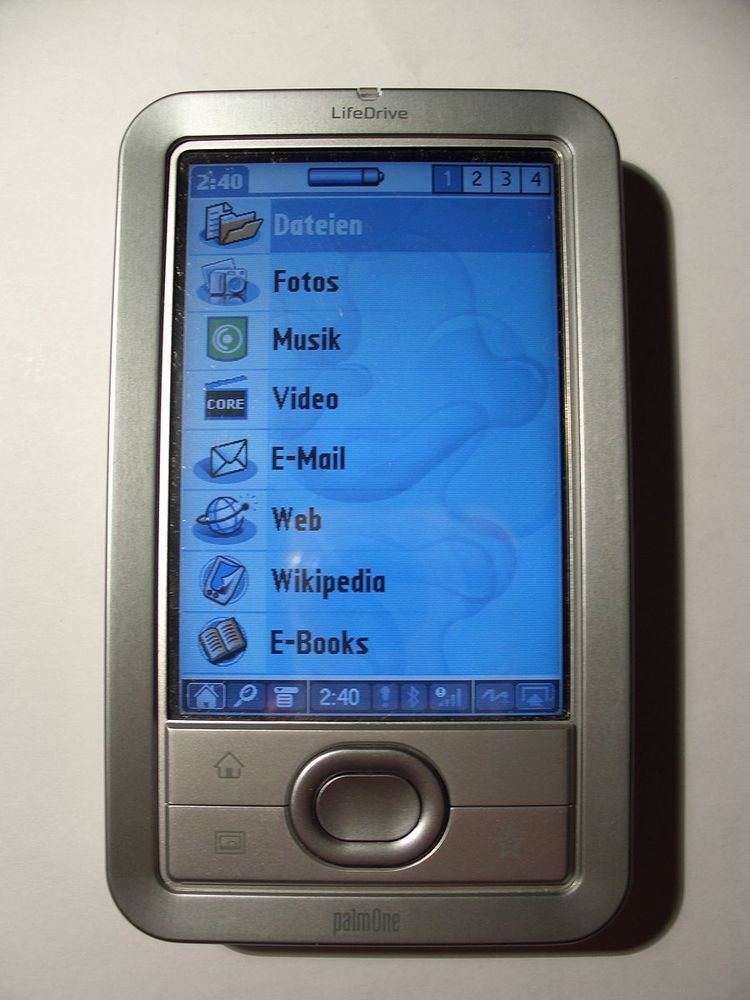Manufacturer Palm Inc. Release date 2005 | Type Candybar PDA Operating system | |
 | ||
Storage 4 GB Hitachi Microdrive (3.85 GB user-accessible)64 MB Non-Volatile RAM (45.4 MB user-accessible)Secure Digital card slot | ||
The LifeDrive was a Palm OS-based handheld personal digital assistant device that was produced by PalmOne, a former incarnation of Palm, Inc. The device was PalmOne's first and only foray into the "Mobile Manager" device category. As its name suggests, Palm intended the LifeDrive to be capable of providing all the capabilities and data storage space that a user could possibly need during the course of the day, including contacts, calendar, music, images, video, and applications. At the time of release, the 4-gigabyte capacity that was chosen for this task could not be achieved using the flash memory used by most PDAs, while keeping the cost of the device low enough for consumer purchase. For this reason, a 4 GB microdrive hard disk drive was selected for the task. It featured a separate data partition that could be used as a portable disk drive. The LifeDrive featured Bluetooth and Wi-Fi connectivity, the first Palm handheld to feature both. The device came pre-loaded with eReader, Documents To Go, and WiFile software.
Contents
The hard disk used in the LifeDrive was selected by Palm for its fast spinup speed, but delays in application launching were inevitably longer than with flash-based handhelds. Many speed concerns were addressed with a user-applicable ROM update, which was released by Palm in December 2005. One of the first troubles for the Life Drive was when it was taken off of United Kingdom shelves because the device fell short of EU regulations on the use of hazardous materials. Finally, due to its high price, slower performance than other handhelds, and advances in flash memory which led to reduced prices and greater capacities, the LifeDrive did not fare well in the market, and was discontinued on January 31, 2007.
Features
Besides being the first Palm device with a hard drive, the LifeDrive introduced other features that were new to Palm devices, such as a three-position power switch (on, off, keylock), and a dedicated screen rotation button. The new power switch became a feature of the Treo smartphone line; the screen rotation button also appeared on the TX, but was later phased out among Palm devices, with dedicated accelerometers taking over the task of properly orienting the screen.
User upgrades
The ROM update for the LifeDrive is available at palm.com.
It is possible to replace the stock 4 GB Microdrive with a 4GB Compact Flash card, improving battery life and operating speed due to the lower power consumption of flash memory and relative speed increased compared to hard disks.
